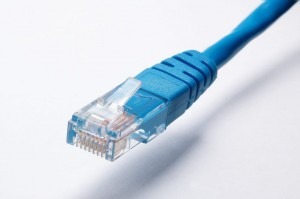Torn between Cat6 and Cat6a cables? We’ve got you covered. This quick guide breaks down their key differences to help you choose the right one for your network.
Key Takeaways:
- Speed: Cat6a boasts 10Gbps, while Cat6 maxes out at 1Gbps.
- Crosstalk: Cat6a’s improved shielding reduces signal interference.
- Cost: Cat6a comes at a premium price compared to Cat6.
Q: What’s the difference between Cat6 and Cat6a cable?
Q: Which cable is better, Cat6 or Cat6a?
A: It depends! Cat6a offers superior speed and noise immunity, but at a higher cost. If you prioritize budget and Gigabit Ethernet, Cat6 suffices. For 10Gbps networks or futureproofing, Cat6a is the better bet.
The main difference between Cat6 and Cat6a cables is the performance and bandwidth capabilities. Cat6 cables are capable of supporting data rates up to 1 Gbps, while Cat6a cables can support data rates up to 10 Gbps. Cat6a cables also have stricter specifications and are designed to reduce crosstalk, ensuring more stable and reliable performance. Additionally, Cat6a cables have thicker insulation and are more resistant to interference and noise, making them better suited for use in high-speed networks and environments with electromagnetic interference.
Should I buy Cat6 or Cat6a cable?
It depends on your specific needs and requirements. Cat6 cables are suitable for most applications, but Cat6a cables offer higher performance and greater bandwidth capabilities. If you have a high-speed network or require support for higher data rates, Cat6a cables may be a better option. However, they may also be more expensive and may not be necessary for all applications. It is important to assess your specific needs and consult with a professional before making a decision.
Buy Cat6 & Cat6a Cables at Comms Express
Cat6 cable speed
Cat6 cable is capable of providing speeds of up to 10 Gbps. However, the actual speed that you will be able to achieve will depend on several factors, including the length of the cable, the quality of the cable, and the devices that are connected to it. In general, Cat6 cable is more than sufficient for most home networking applications and will be able to support fast internet speeds and high-quality video streaming. Cat6a cable is capable of supporting speeds up to 10 Gigabits per second (Gbps).
Maximum length of cat6 cable without data loss
There are several standards for network cable distance, including:
- The maximum distance for unshielded twisted pair (UTP) cables is 100 meters (328 feet) for Ethernet networks and 90 meters (295 feet) for Token Ring networks.
- The maximum distance for shielded twisted pair (STP) cables is 100 meters (328 feet) for both Ethernet and Token Ring networks.
- The maximum distance for fiber optic cables is 2 kilometers (1.24 miles) for Ethernet networks and 1 kilometer (0.62 miles) for Token Ring networks.
- The maximum distance for coaxial cables is 500 meters (1,640 feet) for Ethernet networks and 185 meters (607 feet) for Token Ring networks.
- The maximum distance for wireless networks varies depending on the technology and the signal strength, but it is generally much longer than for cable-based networks.

